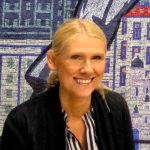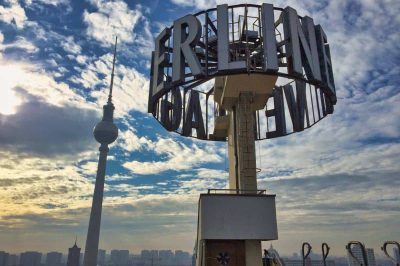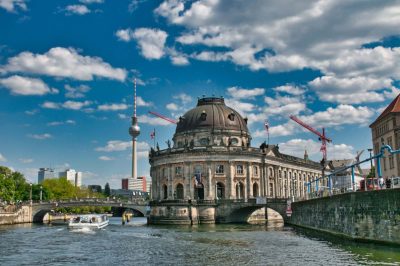Modernity in Berlin architecture did not begin in the 1920s, but already at the end of the 19th century. This is a little-known phenomenon. In the period from 1890 to 1914, laboratories of a new style formed not only in Paris, Munich, Brussels and Vienna. The immense industrial boom was accompanied by unimagined population growth and increasing wealth of a bourgeois class.
Never before had there been so much construction in the metropolises of Europe as at this time. The new “miracle materials” of steel, concrete, glass and iron were perfect for the construction of transport buildings, courts, department stores, schools, villas, baths and apartment buildings. In this article we present you the most beautiful buildings of Art Nouveau Berlin. By the way, if you are interested in the classic East Berlin sights, you will find them here. And here you can find the most interesting GDR buildings in Berlin.
Facades with eye-catching shield gables, metal-clad half-arch windows, round-roofed bay windows, wrought-iron balconies, flat plant ornaments, and colorfully tiled surfaces appeared in the Berlin cityscape. The will to distinguish itself from neo-baroque Wilhelminism was strong.
Far more curlicue buildings survived the two world wars, then one might expect, but in many cases they did not remain unscathed. What bombs and shells had failed to do, a Berlin “stucco abatement program” sponsored by the Senate took care of in West Berlin, in keeping with the architecture of New Objectivity after 1920, but especially in the 1950s and 1960s. But the ornate facades in East Berlin were also “foamed and shaved” (H.G. von Gaertringen) on a grand scale.
Since reunification, there has been a trend towards a return to the original shape of the buildings. Since then, it is not uncommon for the original facades to be restored after renovation, including thermal insulation. The Berlin State Office for the Preservation of Historical Monuments lists 275 Art Nouveau buildings that still exist and are protected as historical monuments. The fact that many of these buildings in East Berlin have survived partly because Erich Honecker had a soft spot for this style is a footnote in history. He himself owned an Art Nouveau villa in Schwerin.
These are the most beautiful buildings of Art Nouveau Berlin
Municipal Court
Address: Littenstraße 11-17, District: Mitte
It was once the second largest building in the city after the Berliner Schloss. The two architects Paul Thoemer and Rudolf Mönnich had planned the magnificent building in the Wilhelmine Baroque style. However, the master builder Otto Schmalz preferred the Art Nouveau style and changed the design without further ado. The result was a 200-meter-long magnificent building, designed on a rectangular floor plan, with turrets and an unmistakable Art Nouveau staircase that extends over four floors and features richly curved lines, stucco and stair grilles. The neo-baroque entry portal is vertically accented by a multitude of pilasters and a large metal-glazed half-arch window. Several cross-connections open up the atriums of this gigantic palace of justice, which was the seat of the GDR’s Supreme Court until 1990.
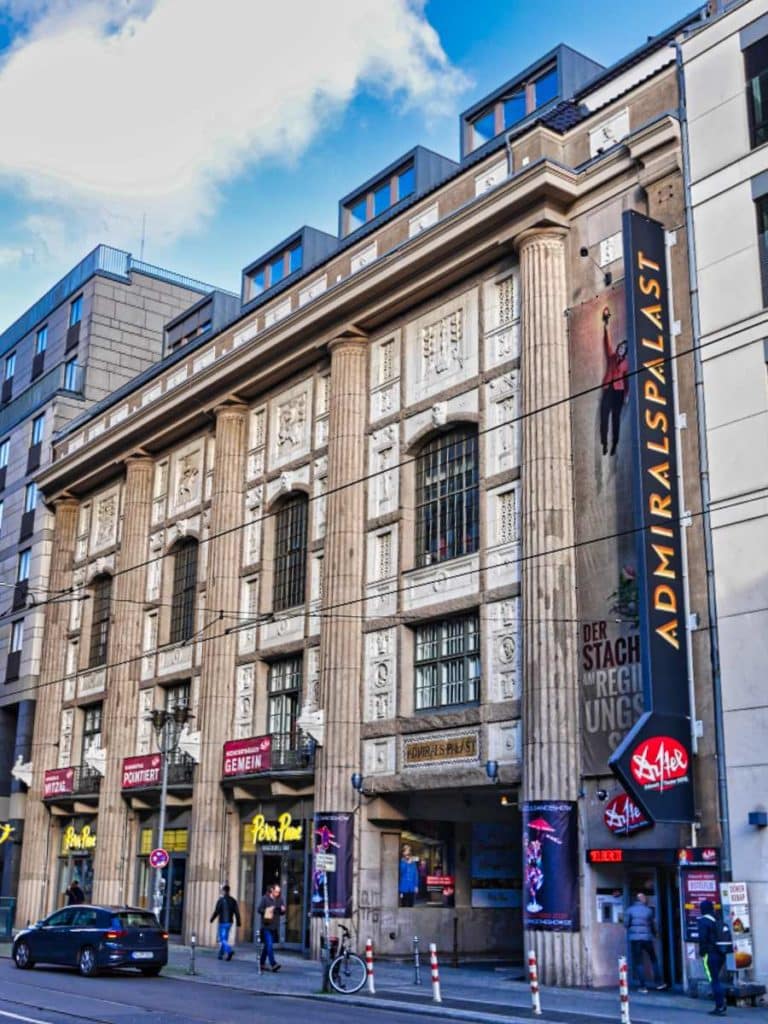
Admiralspalast
Address: Friedrichstraße 101-102, Planckstraße 21, 23, District: Mitte
Built in 1911 on the site of the former Admiralsbad, the revue theater was designed by architect Heinrich Schweitzer as part of a glamorous entertainment palace with a bathhouse, skating rink, movie theater and restaurant. In 1922, the concept of the house was changed. The architects Kaufmann and Wolfenstein converted the ice rink into a variété theater with over 1000 seats. In its current form, the Admiralspalast has existed since 1939; the building was largely spared during World War II. During the renovation of the bath complex, which now belongs to the Samwer brothers, it was still possible to apply original Art Nouveau tiles and glass mosaics that had spent the turmoil of war in the Lichtenberg depot.
The front facade of the part of the building facing Friedrichstraße is adorned with neoclassical Doric half-columns made of granite and relief panels, but also filigree balconies. The facade facing Planckstraße shows plant ornamentation and the typical colors of Art Nouveau: dark beige, maroon, vermilion and bottle green. Small round oriels and a lace border under the cornice lend the building a pompous playfulness. The front of the theater, which can only be seen from the courtyard, is now entirely white. Only the hexagonal and octagonal window openings still recall the turn-of-the-century style. Definitely one of the most beautiful Art Nouveau buildings in Berlin!
Hackesche Höfe
Address: Rosenthaler Straße 40/41, District: Mitte
Germany’s largest enclosed courtyard complex attracts more than just tourists in droves. Architect and developer Kurt Berndt designed the residential and commercial courtyard complex with a total of eight courtyards, whose main user until the end of World War II was the Deutsche Familienkaufhaus department store. However, the Hackesche Höfe, inaugurated in 1906, also played an important role socially, with the festival halls serving as meeting places. Berlin architect August Endell was responsible for the opulent interior and courtyard façade design in Art Nouveau style, parts of which are still preserved today.
The courtyards offer a wide range of color combinations of tiles and facing bricks, as well as window opening types that were typical of Art Nouveau. The street facades, however, were oriented to the preferences of the imperial family and featured elements of Wilhelmine eclecticism, such as a neo-Baroque roofscape and Egyptian sculptures. The present front building, supplemented with two huge round arches and rows of metal-glazed windows with black friezes, adapted to the angled street front, shows the first Art Deco borrowings.
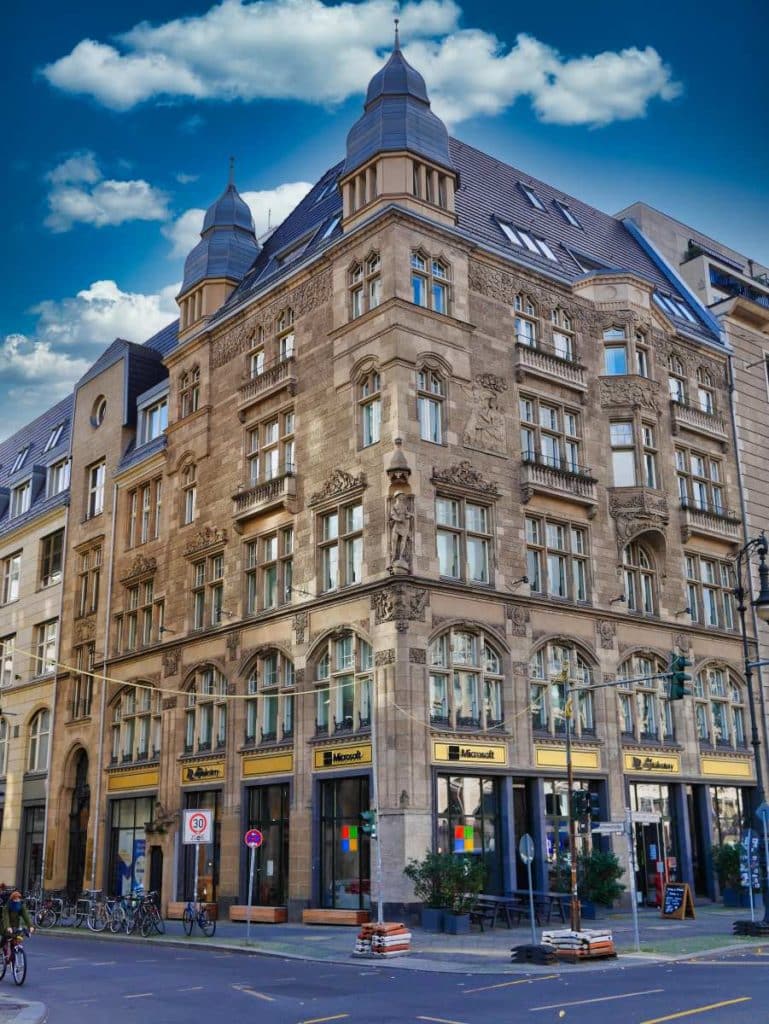
Former Hotel Carlton
Adress: Unter den Linden 17, District: Mitte
Of 64 buildings on the former boulevard “Unter den Linden” in the center of Berlin, only 16 survived the hail of bombs during World War II. Designed in 1902 by Carl Gause, one of the architects of the Adlon Hotel, which was destroyed in the war, the corner building with its high arrow position, large window areas and two tower hoods features elements of Gothic, German Renaissance and Art Nouveau.
The natural stone facade with ornamented bay windows, balconies and segmental arch windows, restored in 2001, makes the building a typical hotel palace of the last turn of the century. The unusually sculptural facade is decorated with floral and figurative reliefs, as well as sculptures such as Mercury on the globe at the corner of the building. In the 1960s, the upper floors housed GDR’s German Building Academy (Deutsche Bauakademie der DDR). Today, the completely renovated former luxury hotel houses the Berlin headquarters of Microsoft.
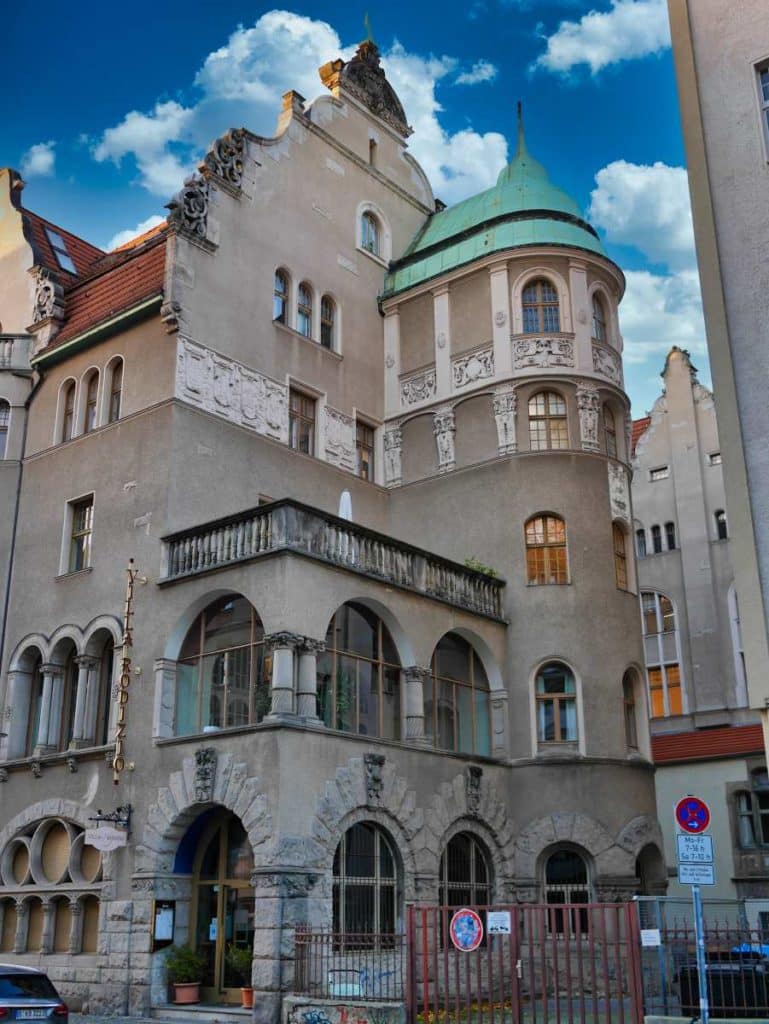
Villa Groterjan
Adress: Milastraße 1–4, District: Prenzlauer Berg
The Groterjan brewery resided in an entire street block and to this day the impressive Art Nouveau buildings have remained almost unchanged. The inn and residential building captivates with its asymmetrical design, which is dominated by a five-story round tower with a spire. This seems to nestle against the six-story shield gable. The ensemble, which has round-arched windows across its entire surface and a large corner balcony above a pillar arcade, is decorated with bright plant friezes in the upper facade area. The castle-like, three-story, round-arched bay window is inspired by the Nordic Art Nouveau style from Scandinavia.
The utility building in Cantian Street was designed in red brick, but also with high shield gables and a corner tower. Stylistically, however, the building stands out from the villa already by the fact that on the large surface there are only a few small windows.
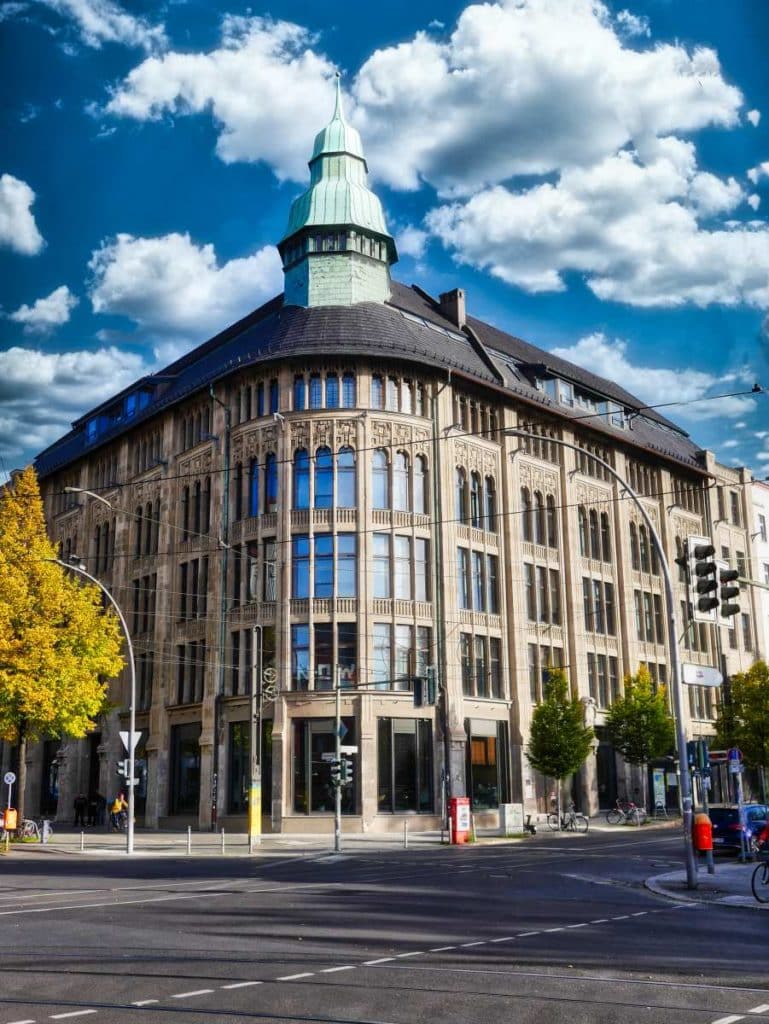
Jandorf Department Store
Adress: Veteranenstraße 28, District: Mitte
This is one of the most beautiful corner buildings in the Rosenthaler Vorstadt and still unique today. The department store pioneer Adolf Jandorf had a department store crowned with a ridge turret (today a tower) built here a few years before he commissioned the Kaufhaus des Westens, with an austere pillar facade and huge shop windows typical of the time. The architectural firm of Lachmann & Zauber designed a five-story building with a rounded corner, a skylight hall on the fifth floor, and narrow rows of high rectangular windows.
The round-arched windows on the fourth floor under the overhanging cornice are decorated with plant ornamentation. The atrium disappeared in 1926 when the department store area was enlarged. In the GDR, this ensemble, occupied after 1926 by the department store giant Hermann Tietz, housed the Haus der Mode (House of Fashion). The Jandorf department store is therefore not only one of the most beautiful Art Nouveau Berlin buildings, but can also look back on an exciting history!
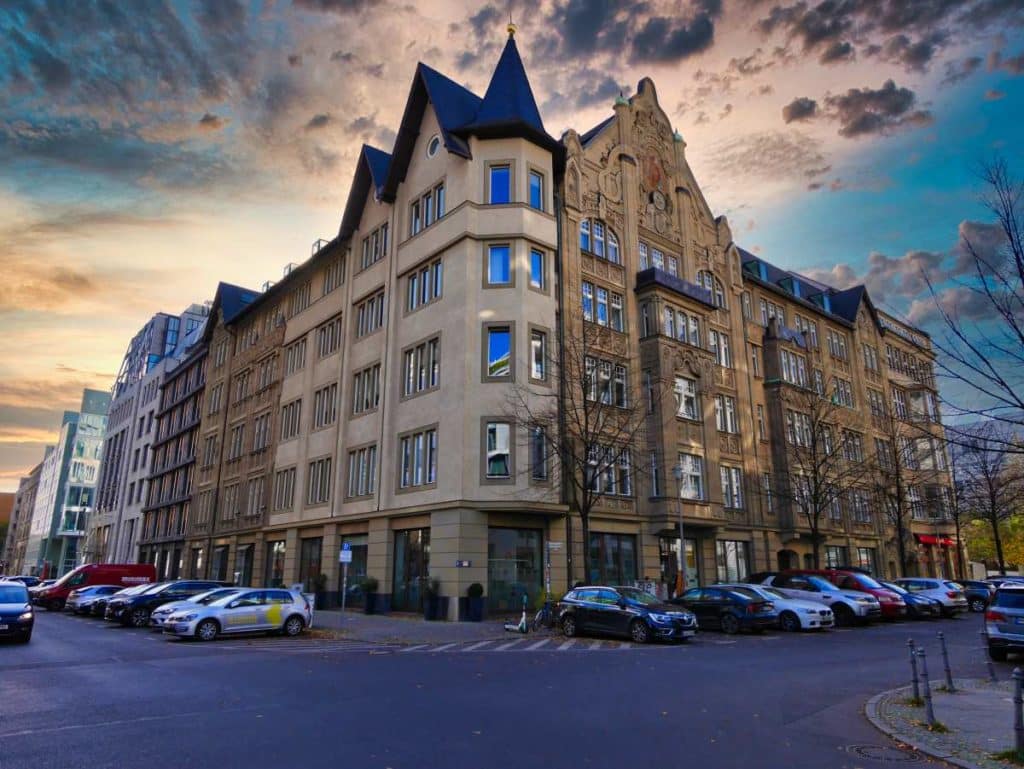
Former Hotel Roter Adler (destroyed in parts)
Adresse: Schützenstraße 6, District: Mitte
The imposing five-story commercial building in the Mitte district was designed from the outset by architect Otto Michaelsen to include a hotel wing. Michaelsen was a student of the well-known Berlin architect Alfred Messel. The corner of the building was destroyed by a bomb during World War II and was completed and reformulated in 2001 by architects Nalbach and Nalbach in the modern style, but with a tower and pointed gables.
The original facade with the large shield gable has many elements of Art Nouveau, such as vertical rows of oriels, round-arched windows, interlace band ornamentation and plant friezes. The gable ornament of the ensemble, completed in 1907, depicts Emperor Charlemagne and Wilhelm I with a coat of arms with the Reichsadler in the center. As early as 1915, the hotel was converted into additional office space, which later housed the Chief Public Prosecutor’s Office.
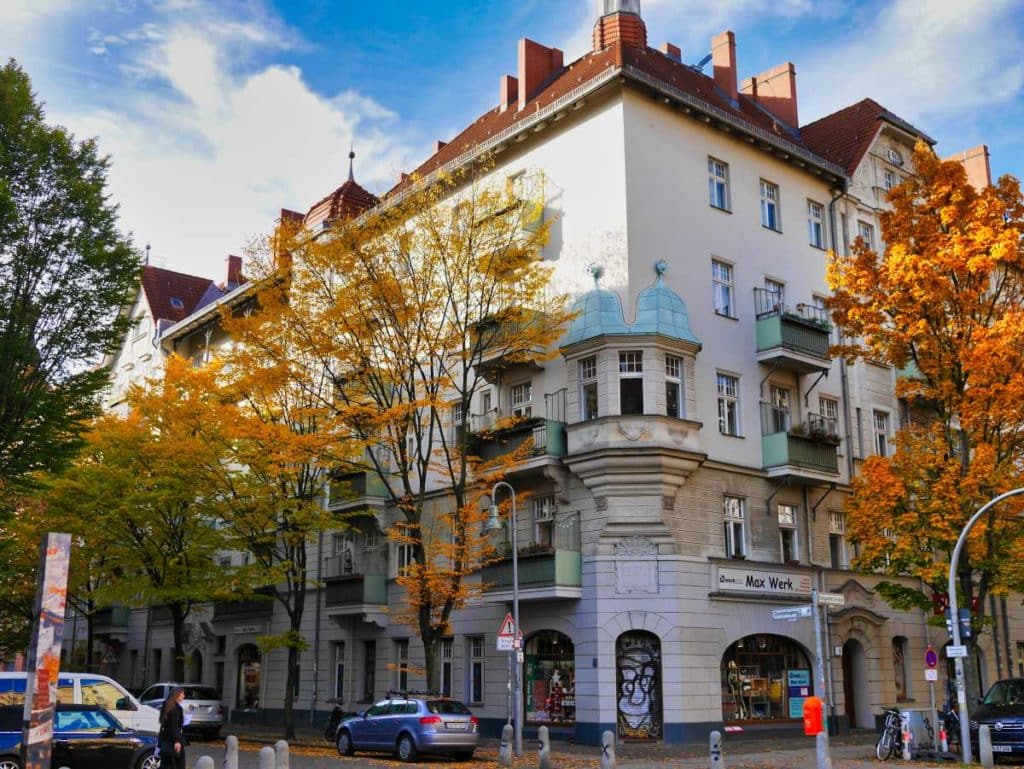
Apartment house Stargarder Straße
Adress: Stargarder 3 und 5, District: Prenzlauer Berg
Alfred Messel was one of the most prominent architects of his time. His department store buildings in Berlin were revolutionary; the Wertheim department store on Leipziger Platz was bombed during the war and later demolished. The housing complex for the Berliner Spar- und Bauverein was built between 1899 and 1900, at a time when the housing situation in the cramped tenements was an ongoing public scandal.
Messel, together with his colleague Paul Korb, designed a new type of apartment with balconies, indoor toilets, commercial kitchens and communal laundry basements. Instead of the dark “Berliner Zimmer” located in the transition from the front building to the side wing, he positioned the staircases. Open courtyards with beautiful green spaces invited people to linger. Messel’s cooperative buildings were a first successful attempt to abolish the closed Berlin backyard without losing sight of the densification typical of a large city.
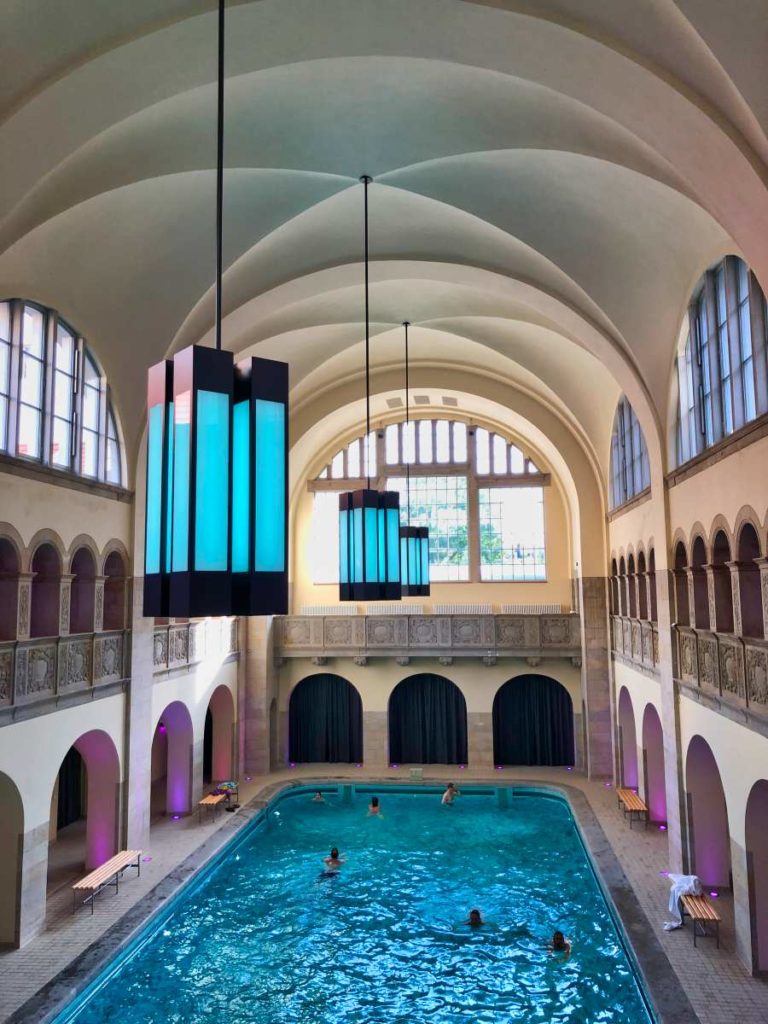
Oderberg Municipal Bath
Adresse: Oderberger Straße 57 und 59, District: Prenzlauer Berg
Ludwig Ernst Hoffmann built this Art Nouveau gem between 1899 and 1902. After surviving the Second World War unscathed, cracks in the pool floor led to its closure in 1986. From then on, parties and art exhibitions were held in the listed halls. In 2016, after four years of renovation, the swimming hall was reopened as a hotel*, language center (GLS), bar and restaurant. The swimming pool floor can be raised hydraulically and thus still be used as an event location. The water is fed into underground tanks for the purpose.
A gallery of round arch arcades frames the indoor swimming pool designed with a groined vault. The owner couple has paid great attention to detailed restoration, so that throughout the interior, up to the hotel rooms, one can still find original Art Nouveau Berlin elements, such as staircase grilles, wooden fixtures, cabin doors and floral ornamentation, even though the brick building, designed with three shield gables on the main body, was conceived primarily in the Neo-Renaissance style. The rows of round-arched windows on the first floor decorate the main entrance surrounded by columns, pediments and mermaid relief.
What are your favorite Art Nouveau Berlin buildings? Feel free to write us a comment!

